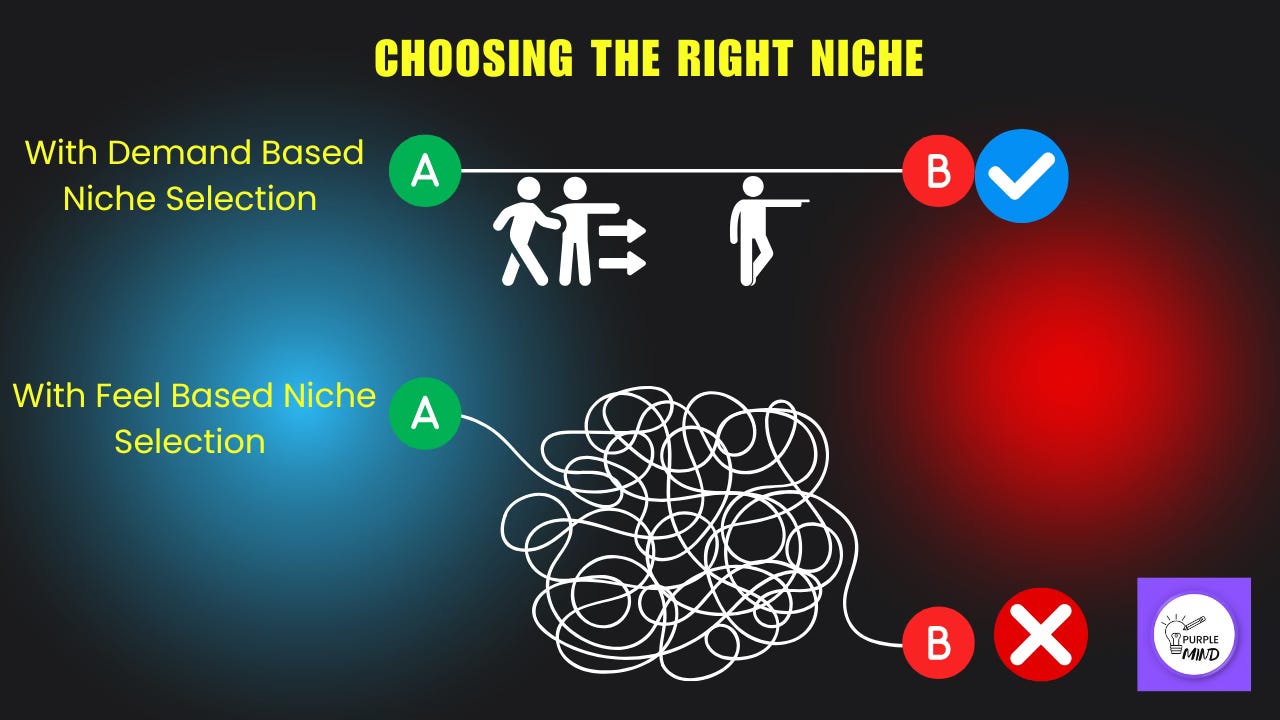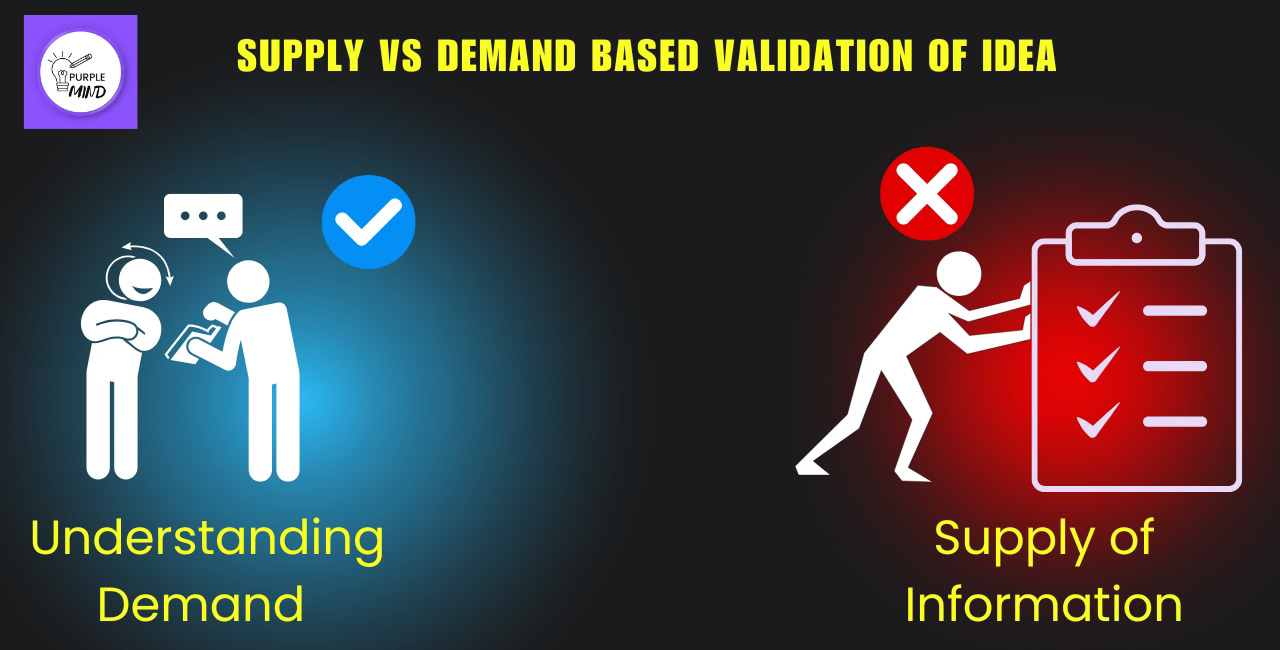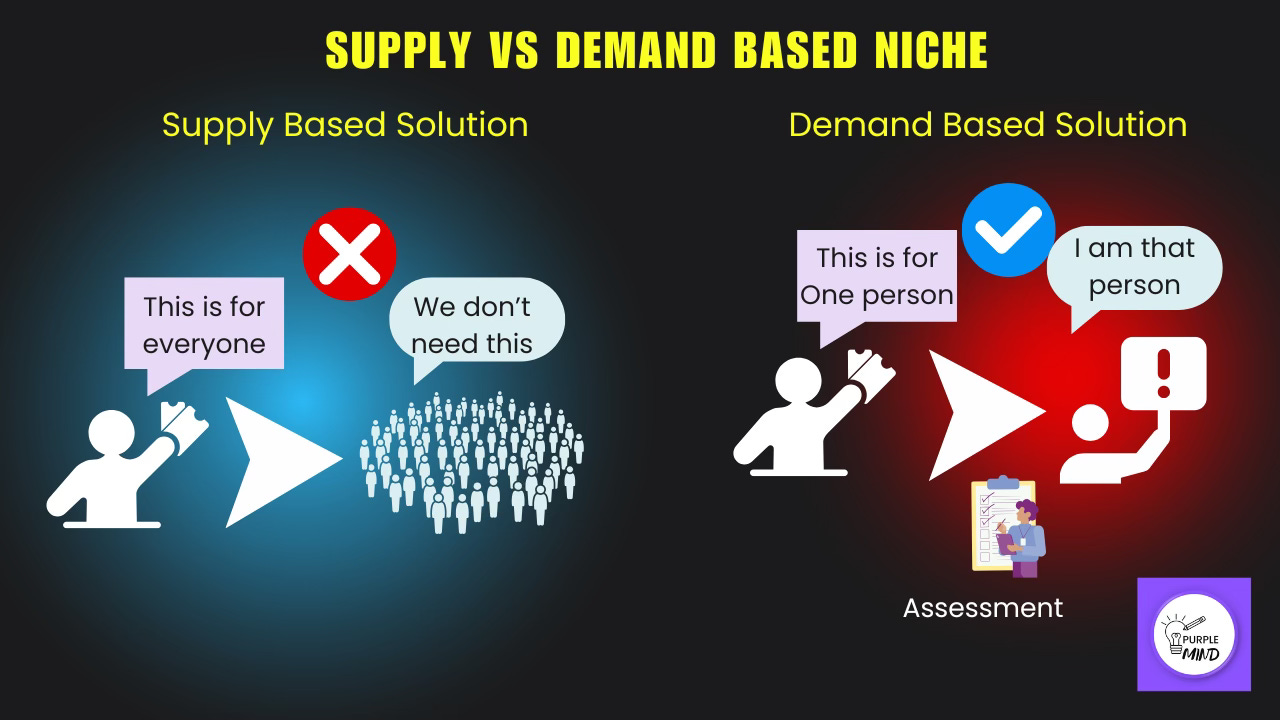3rd Part- 3 Steps to Find a Profitable Niche With FREE Workbook
🚀 Let me guess – you had an idea and started writing only on social media.
After a few weeks, you think the idea just doesn’t make sense and want to drop it. ❌
Then starts the niche-to-niche transition, and you get caught up in an endless loop. 🔄
Trust me – I’ve been there. 🤦♂️
After several failures, I realized there is a significant step between finding a niche and starting to work on it. 🧐
And that is testing the niche. ✅
In this newsletter, we will go through the process of testing a niche between identifying it and executing on it. 🎯
In the last two newsletters, I discussed finding the right niche. Here are the last two parts (In case you missed it)
1st Part-This Unfair "Niche Finder" Helped Me Make $1.1 MM Yearly
🎄 It was Dec-2021, During Christmas 🎄
2nd Part-This Unfair "Niche Finder" Helped Me Make $1.1 MM Yearly
🌟 70% of one-person businesses fail in the first 3 years of starting out.
Let’s talk about how to effectively test ideas before committing to execution.
Link of my Free Ebook - Download now
3 Types of Demand-Based Niche Identification
The goal here is to identify if the idea that we want to pursue is worth pursuing by analyzing the demand.
Three types of assessments could be done for this:
1️⃣ Waitlisting
2️⃣ Assessment
3️⃣ Customer Need Analysis
Let’s go through each one in detail!
Waitlisting
This method is used when we want to check if our niche is solving the problem of our target customer or not.
So, the idea here is that we will tell our target customers that they can join the waiting list, and in return, they will get some discount whenever the product launch happens.
We will understand two things from this:
✅ How many people are genuinely interested in the product or in our niche?
✅ Is the solution solving the problem of our target customer?
One of the best ways to do this is to ask people to join the waitlist by answering five questions.
These questions will help us understand:
📌 Where the customer is in their journey
📌 Where they want to reach
📌 What is in their way
To understand this, we run an assessment with these five questions:
👉 Which best describes your current situation?
👉 Tell me about where you want to be. Which best describes the outcome that you're looking for from this product or service?
👉 What's in the way?
👉 Which best describes the reason you've not been able to get that outcome in the past?
👉 What are you currently considering as an option for getting that outcome?
🔥 For people who fill out this assessment, it is a good idea to offer some discount or a free product in return to motivate them to complete it.
You can get my free workbook to do this - Link of my Free Ebook - Download now
Assessment
This is my favorite demand analysis process.
In this process, we launch an assessment, and in return, people get something personalized for them.
Let me explain this:
💭 Picture this – you want to start a newsletter about health and wellness or a product on improving sleep.
So, your assessment would look something like this:
😴 How many hours of sleep are you getting now?
⏳ How much time does it take for you to fall asleep after going to bed?
🍷 Do you have any addiction to alcohol?
Based on these assessment questions, the user could get a personalized score and recommendations.
✅ This always works because it’s a win-win.
You get the data you need, and the customer gets a digital product that assesses something about them and provides recommendations.
Customer Need Analysis
Here’s the interesting thing.
Most people think they have to give all the information to their target customers, but there is already a lot of information on the internet.
We moved from an era where information was scarce to a modern day where we have too much of everything.
So, people already know most of the information.
💡 The difference is in the packaging.
How can we take all the information, package and customize it based on customer needs, and sell it?
In customer need analysis, we try to run discussion groups.
The benefits of discussion groups:
✅ They trigger new ideas for new people
✅ They improve the connection between you and your target customer because they are invested in you
I used to run this in X groups.
The outcome we are looking at is:
📌 What challenges does one group of people have?
📌 What type of solution could solve this problem?
📌 At what price point?
Monetizing the Top 10%
This applies everywhere.
So, the rule says:
✅ No matter the size of your audience
✅ No matter the income level of your audience
💡 Always, 10% of people will contribute to 60% of your revenue.
To dig deeper:
📌 1% contributes to 15%
📌 9% contributes to 45%
That’s why you see the new trend of making everything free for 90% of people and offering a solution to the top 10%.
Our job?
🔹 Identify who these 10% of people are
🔹 What price they are willing to pay
Takeaway
Testing a niche before committing to execution is crucial to avoid wasted effort and endless pivots. By using waitlisting, assessments, and customer need analysis, you can validate demand and refine your offering. Focus on the top 10% of your audience—they will drive most of your revenue. 🚀





